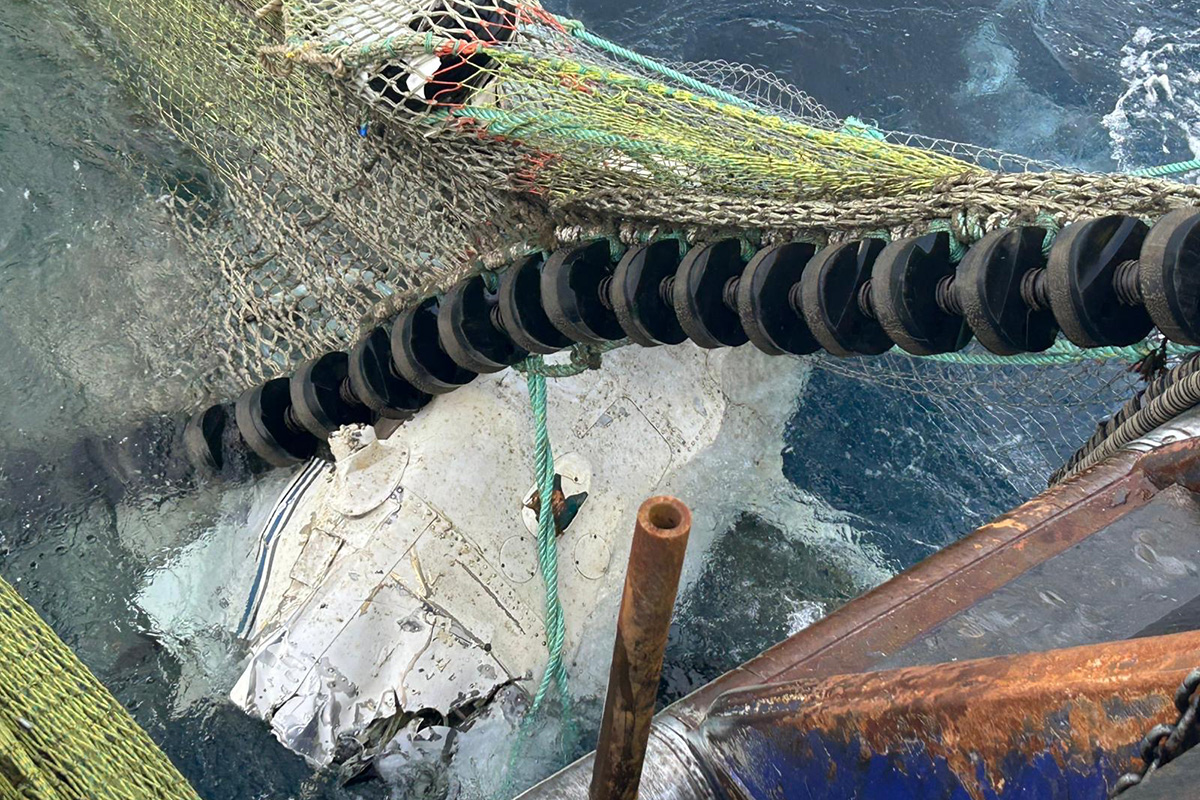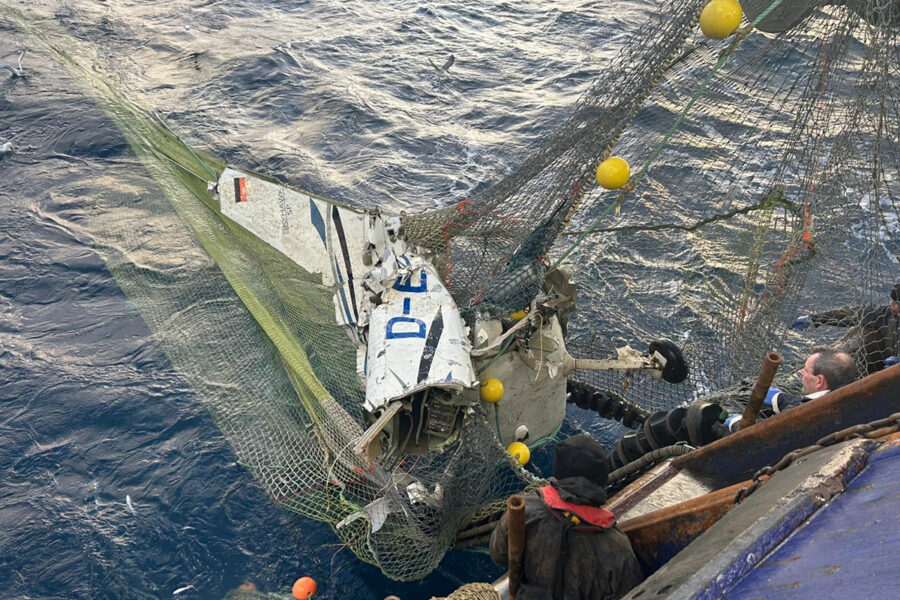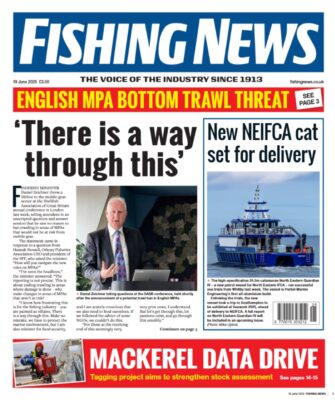The seven-man crew of Peterhead whitefish trawler Benarkle II PD 400 found themselves at the centre of a major incident when they hauled east of Shetland on Friday, 6 December and discovered the wreckage of a German-registered Cessna light aircraft entangled in the gear.
The 24m Benarkle II is skippered by Mark Addison on rotation with his sons Mark, William and Alex, often working from Shetland. The crew had around a day and a half left of their trip when the drama unfolded, having sailed from Shetland five days earlier.
The discovery presented a major challenge for the crew, in a complex operation overseen by Mark Addison. He told Fishing News there was no way of knowing when they had picked up the wreckage during their five-hour tow. “We didn’t know it was in the net, and the spread hadn’t come in, so it could have been picked up anywhere on the tow. It wasn’t heavy, as there was no engine on it, just the fuselage. It wasn’t like towing a boulder – it’s just like an aluminum box, pretty much.
“When we hauled and I saw something coming up on the camera, I nipped out and was thinking: ‘What is that?’. It was caught in the flip-up, and the crew couldn’t see clearly what it was until we moved the gear about, and then we saw the tail exposed.
“I took a photo and sent it to Mark Andrew Masson, the skipper of the Valhalla, who was fishing beside us. I was working the block when he phoned me and said: ‘I think you had better call the authorities as I have googled the tail number of that plane, and it was lost a year ago with a man onboard.’”
The plane in question had been missing since 30 September, 2023, when it departed from Utersen airfield in Germany with the 62-year-old pilot as the sole occupant, with the stated intention of flying south to visit relatives in Bayreuth. However, the plane instead headed northwest and took a course across the middle of the North Sea, headed in the general direction of Shetland.
Norwegian air traffic control was the last to pick up radar contact, when the plane was approximately 70nm southeast of Shetland. It was descending at a rate of 1,000ft per minute, which investigators believe may have been as a result of running out of fuel. Prior to the last recording, there had been no contact with any air traffic control, despite the plane passing through both Danish and Norwegian airspace. The pilot had been due to take his wife, but changed his plans that day and departed alone.
Mark and his crew were faced with trying to retrieve whatever they could of the wreckage. He said: “It took us a while. We ending up single-ending it; the net was wrapped round it and the flip-up ropes were tangled round it. When we eventually got it free, the block took it up no bother, and we got the fuselage on the top deck. The tail section fell away and went back into the sea.”

The fuselage was eventually recovered to the top deck of Benarkle II.
It became apparent when the fuselage was aboard that there were human remains inside it.
Mark told FN that Valhalla had fished up and down that area all year with a few other boats, and several pair teams had also been working there. However, the wreckage could have been towed about previously, as
it wasn’t heavy – it was only because of the flip-up ropes tangling around a wheel that they had brought it up.
He said: “When we spoke to the police, they told us that CID would have to come from Aberdeen and the boat would be cordoned off upon arrival while they did their investigations. We were told we would be met by all the relevant authorities when we arrived. The Coastguard was concerned about stability with the fuselage on the deck up top, but honestly there was no problem – there was not much weight to it.”
The authorities conducted a thorough search of Benarkle II when she arrived in Shetland, and the area was taped off as the various agencies looked meticulously at the wreckage and checked for any pieces that might have fallen off or any other clues that might assist with solving the year-old mystery. They also took a copy of the vessel’s CCTV showing the operation to retrieve the fuselage, and of all the photos taken by the crew to assist in the investigation.
The wrecked fuselage was lifted off Benarkle and taken by road transport under police escort to a secure location in Shetland for further examination by Police Scotland, the Air Accident Investigation Branch and its German counterpart, the BFU, which had initially led investigations into the doomed aircraft.
Mark said he hoped that by taking the wreckage ashore, Benarkle’s crew had helped the deceased man’s family to get answers and closure.








